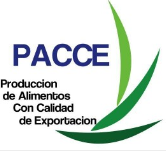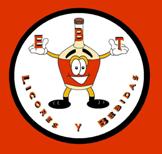A Guiding Glow to Track What Was Once Invisible
Premio nobel en Química 2008
Looking at a cell through an optical microscope is like a satellite view of New York City. You can see Central Park, buildings, streets and even cars, but understanding the cultural and economic life of the city from the distance of Earth orbit is difficult, maybe impossible.
Tissues of a mouse embryo tagged with green and red fluorescent proteins, which can be used to follow where proteins are moving in a cell.
Likewise, biologists can easily see large structures inside a cell like the nucleus with its folded-up chromosomes and the energy factories of the mitochondria. But most of the details of how a cell functions — the locations of specific proteins, the mechanisms used by the cell to send messages back and forth, the transportation system that moves proteins from place to place — were too small to be seen.
Nowadays, using the same optical microscopes, biologists can see what was once invisible with the help of a fluorescent protein that is the focus of this year’s Nobel Prize in chemistry. The prize was awarded to Osamu Shimomura of the Marine Biological Laboratory in Massachusetts and Boston University, Martin Chalfie of Columbia University and Roger Y. Tsien of the University of California, San Diego.
The protein, known as the green fluorescent protein, or G.F.P., was for years just a biological curiosity from a glowing jellyfish.
It was found in the summer of 1961 when Dr. Shimomura, then a researcher at Princeton, and Frank Johnson, a Princeton biology professor, collected 10,000 Aequorea victoria jellyfish in the waters off Friday Harbor in Washington State. They were looking for what made the jellyfish glow at its edges, and from the 10,000 jellyfish they extracted aequorin, a bioluminescent protein that flashes blue when it interacts with calcium.
In the jellyfish, Dr. Johnson and Dr. Shimomura also discovered a smaller protein, the green fluorescent protein, which is fluorescent rather than luminescent. Bioluminescent proteins require other molecules to provide energy in order to light up. Fluorescent proteins do not. The G.F.P. proteins absorb the energy of ultraviolet or blue light and re-emit the energy as green light.
For biologists, that is an important advantage, because cells with G.F.P.-tagged proteins do not have to be swathed in additional chemicals to make them shine.
G.F.P. remained largely a curiosity until 1992, when Dr. Chalfie used it to make E. coli bacteria glow. He then made individual cells inside C. elegans roundworms glow.
The key to the use of G.F.P. is that biologists now know the gene that produces it. When they want to track the activity of a particular protein in a cell they first must identify the gene that produces it. Then, they can splice in the gene for G.F.P. next to the new gene. The result is that the protein is produced with a slight modification, an attached fluorescent snippet.
All that remains is to shine ultraviolet light on the cells. The tagged proteins glow, revealing their locations.
That is like sticking a GPS tag on every police officer or every delivery truck or every Wall Street trader in New York City. Suddenly, scientists could track the movements of groups of proteins in real time, and a hubbub of activity came into view.
For example, Jennifer Lippincott-Schwartz, a researcher at the National Institute of Child Health and Human Development, has used G.F.P. to follow not only where proteins are moving in a cell, but also where a given protein is present in the largest numbers. Brightness indicates how many protein molecules there are.
Her observations on the traffic patterns of proteins contradicted some long-standing ideas about how some newly made proteins make their way through a structure known as the Golgi complex en route to being secreted out of the cell. Many biologists thought of it as a conveyor belt system carrying the proteins in an orderly fashion. “With this type of imaging approach, we could show that was wrong,” Dr. Lippincott-Schwartz said.
Instead, a newly made protein moves through a series of compartments. When it enters one, it bounces around with other proteins already there; periodically, by chance, one of the proteins is bounced to the next compartment. Thus, the movement was more akin to the diffusion of a gas than a conveyor belt.
Before the advent of the G.F.P. technique, the primary method for pinpointing proteins was to synthesize an antibody that would hook onto a protein and attach fluorescent snippets to the antibodies. The antibodies, injected into a cell, would attach to the proteins, and the biologists could see where they were.
Designing the antibodies was not easy, and each protein required a different antibody. A larger limitation was that that the cells had to be immobilized and “fixed” — killed, in other words.
“Even though it was great,” Dr. Lippincott-Schwartz said, “it certainly was not optimal.”
Other scientists including Dr. Tsien worked out clever ways to study some proteins in living cells. Dr. Tsien and his collaborators were able to extract the proteins they wanted, attach fluorescent molecules to them in the laboratory and then inject the modified proteins back into the cells, taking care not to damage the proteins or kill the cells.
This technique was limited and arduous, leading Dr. Tsien to seek alternatives. By mutating the G.F.P. gene, Dr. Tsien’s lab was the first to make a gene that produced a blue fluorescent protein. Fluorescent proteins now span the spectrum from violet-blue to red and even infrared.
In one study, Dr. Tsien and his collaborators tagged two different proteins that attach to calcium, an important messenger within cells, with two different fluorescent colors. In the presence of calcium, the two proteins stick together, and the colors change noticeably.
A variation of the idea has been used for a sensor of glutamate, an amino acid that is the most common neurotransmitter for exciting neighboring neurons in the human brain. One of the students in Dr. Tsien’s laboratory took a bacterial protein and engineered it with a cyan tag at one end and a yellow tag at the other. When the engineered bacterial protein attaches to glutamate, it changes shape, and again the color changes.
http://www.nytimes.com/2008/10/14/science/14gree.html?_r=0

 orcid.org/0000-0001-6003-7487
orcid.org/0000-0001-6003-7487







 - ULA
- ULA Guia de Alta Montaña
Guia de Alta Montaña Industrial Chemistry – Texas A&M
Industrial Chemistry – Texas A&M Laboratorio FIRP
Laboratorio FIRP Materials Learning – Cambridge Univ.
Materials Learning – Cambridge Univ. Petroleum Refining – Colorado Univ.
Petroleum Refining – Colorado Univ. COLMEQUIM
COLMEQUIM BIOVEN
BIOVEN CARPA
CARPA GUMMYN
GUMMYN PACCE
PACCE PharmaQuim
PharmaQuim PRODELIM
PRODELIM WATERFRESH
WATERFRESH ALITOS
ALITOS Biocosmetiq's
Biocosmetiq's E.B.T. Bebidas y Licores
E.B.T. Bebidas y Licores GELES BETA C.A
GELES BETA C.A NatuVie
NatuVie Productos de Gel de Aloe Vera
Productos de Gel de Aloe Vera Determer
Determer PECTIPRODS Mérida
PECTIPRODS Mérida PETROING C.A.
PETROING C.A. Soft&Pure
Soft&Pure ALQUIVEN C.A.
ALQUIVEN C.A. Deshoil C.A.
Deshoil C.A. Ecopetroliq’s
Ecopetroliq’s Pequinoil S.A
Pequinoil S.A PetroCrack CA
PetroCrack CA Petrol C.A.
Petrol C.A. REFILUB
REFILUB